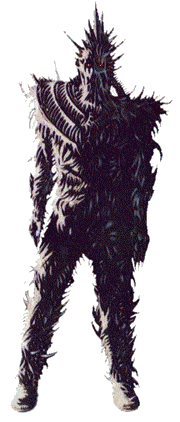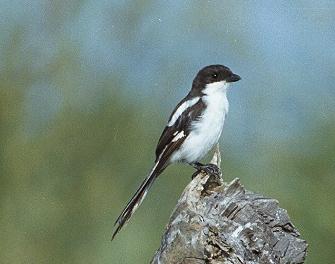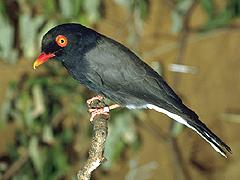 The
Shrike
The
ShrikeThe Shrike and the Tree of Thorns
 The
Shrike
The
Shrike
"It stood at least three meters tall, the four arms seemed normal on the elegant torso, and the body was a sculpted mass of thorns, spikes, joints, and layers of ragged razorwire. The thousand-faceted eyes burned with a light that might have been made by a ruby laser. The long jaw and layers of teeth were the stuff of nightmare."
The Fall of Hyperion, p. 148, by Dan Simmons
The Tree of Thorns
"...a terrible tree of thorns rose five kilometers high into a blood-red sky. Human figures writhed on the many branches and spikes: the closer form recognizably human and in pain, the farther ones dwarfed by distance until they resembled clusters of pale grapes... The dunes were frozen and distorted as if they had been blasted and glazed into glass; the boulders and cliff faces also had flowed and frozen like glaciers of pale stone. There was no atmosphere—the sky was black with the pitiless clarity of airless moons everywhere. The sun was not Hyperion's; the light was not of human experience.
"The thorn tree seemed to be made of the same steel and chrome and cartilage as the Shrike itself: obviously artificial and yet horribly organic at the same instant. The trunk was two or three hundred meters thick at its base, the lower branches almost as broad, but the smaller branches and thorns soon tapered to stiletto thinness as they splayed toward the sky with their awful impalement of human fruit... All were alive. All were in pain."
The Fall of Hyperion, p.210, by Dan Simmons
What is a Shrike?
|
|
 |
 |
And let us not forget the USS Shrike:
For you poetry enthusiasts, Alfred Lord Tennyson wrote a poem titled, "Maud; a Monodrama", in which there are references to the shrike, pain, and atonement